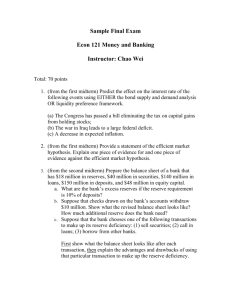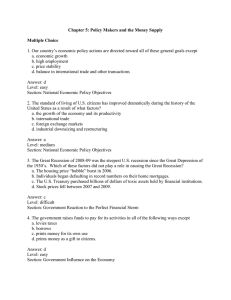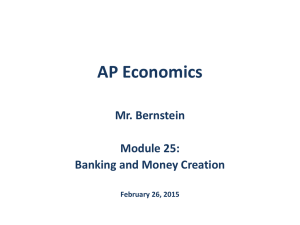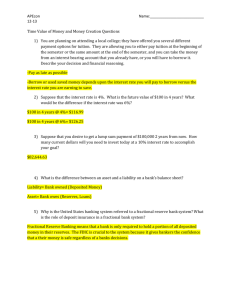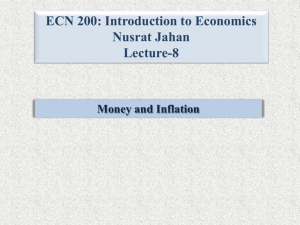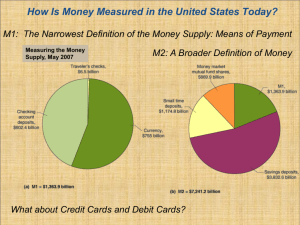Refer to the table below
advertisement
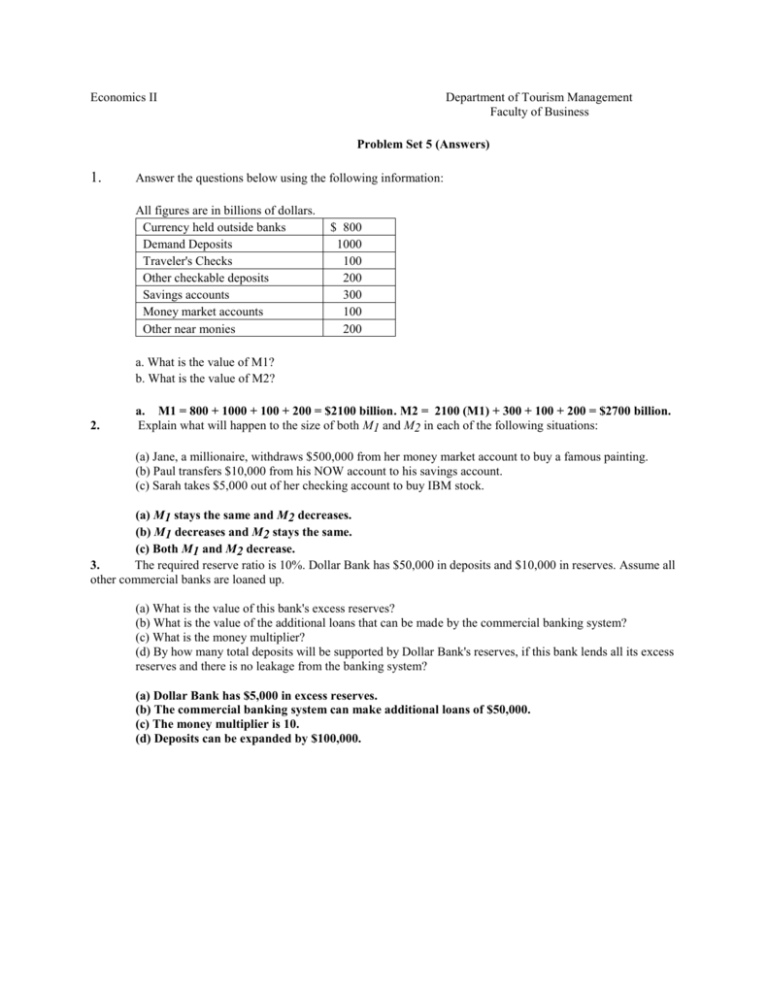
Economics II Department of Tourism Management Faculty of Business Problem Set 5 (Answers) 1. Answer the questions below using the following information: All figures are in billions of dollars. Currency held outside banks Demand Deposits Traveler's Checks Other checkable deposits Savings accounts Money market accounts Other near monies $ 800 1000 100 200 300 100 200 a. What is the value of M1? b. What is the value of M2? 2. a. M1 = 800 + 1000 + 100 + 200 = $2100 billion. M2 = 2100 (M1) + 300 + 100 + 200 = $2700 billion. Explain what will happen to the size of both M1 and M2 in each of the following situations: (a) Jane, a millionaire, withdraws $500,000 from her money market account to buy a famous painting. (b) Paul transfers $10,000 from his NOW account to his savings account. (c) Sarah takes $5,000 out of her checking account to buy IBM stock. (a) M1 stays the same and M2 decreases. (b) M1 decreases and M2 stays the same. (c) Both M1 and M2 decrease. 3. The required reserve ratio is 10%. Dollar Bank has $50,000 in deposits and $10,000 in reserves. Assume all other commercial banks are loaned up. (a) What is the value of this bank's excess reserves? (b) What is the value of the additional loans that can be made by the commercial banking system? (c) What is the money multiplier? (d) By how many total deposits will be supported by Dollar Bank's reserves, if this bank lends all its excess reserves and there is no leakage from the banking system? (a) Dollar Bank has $5,000 in excess reserves. (b) The commercial banking system can make additional loans of $50,000. (c) The money multiplier is 10. (d) Deposits can be expanded by $100,000. 4. Assume the banking system has $100 billion in demand deposits and $10 billion in reserves. In addition, assume that the required reserve ratio is 5%. Answer the following questions: a. How much excess reserves are in this system? b. What is the value of the money multiplier? c. What is the maximum amount of change in demand deposit creation that could take place if the banking system lent out all of its excess reserves. a. The banking system's required reserves are only $5 billion (5% x $100 billion). Therefore excess reserves are equal to $5 billion ($10 billion - $5 billion). b. The money multiplier is 1/.05 = 20. c. D = money multiplier x excess reserves. Therefore D = 20 x $5 billion = $100 billion. 5. i) Refer to Table. The net worth of People's Bank is $________. A) 700,000 B) 400,000 C) 200,000 D) 300,000 Answer: D ii) Refer to Table. The required reserve ratio is A) 15%. B) 25%. C) 10%. D) 8%. Answer: C iii) Refer to Table. People's Bank excess reserves are $________. A) 10,000 B) 20,000 C) 90,000 D) 60,000 Answer: A iv) Refer to Table. Total loans of People's Bank equal $________. A) 640,000 B) 600,000 C) 650,000 D) 610,000 Answer: C 6. Suppose the required reserve ratio is 10%. A $5 million deposit allows commercial banks to create at most A) $25 million. B) $20 million. C) $10 million. D) $50 million. Answer: D 7. The required reserve ratio is 10%. The money multiplier is A) 0.1. B) 1. C) 9. D) 10. Answer: D 4



